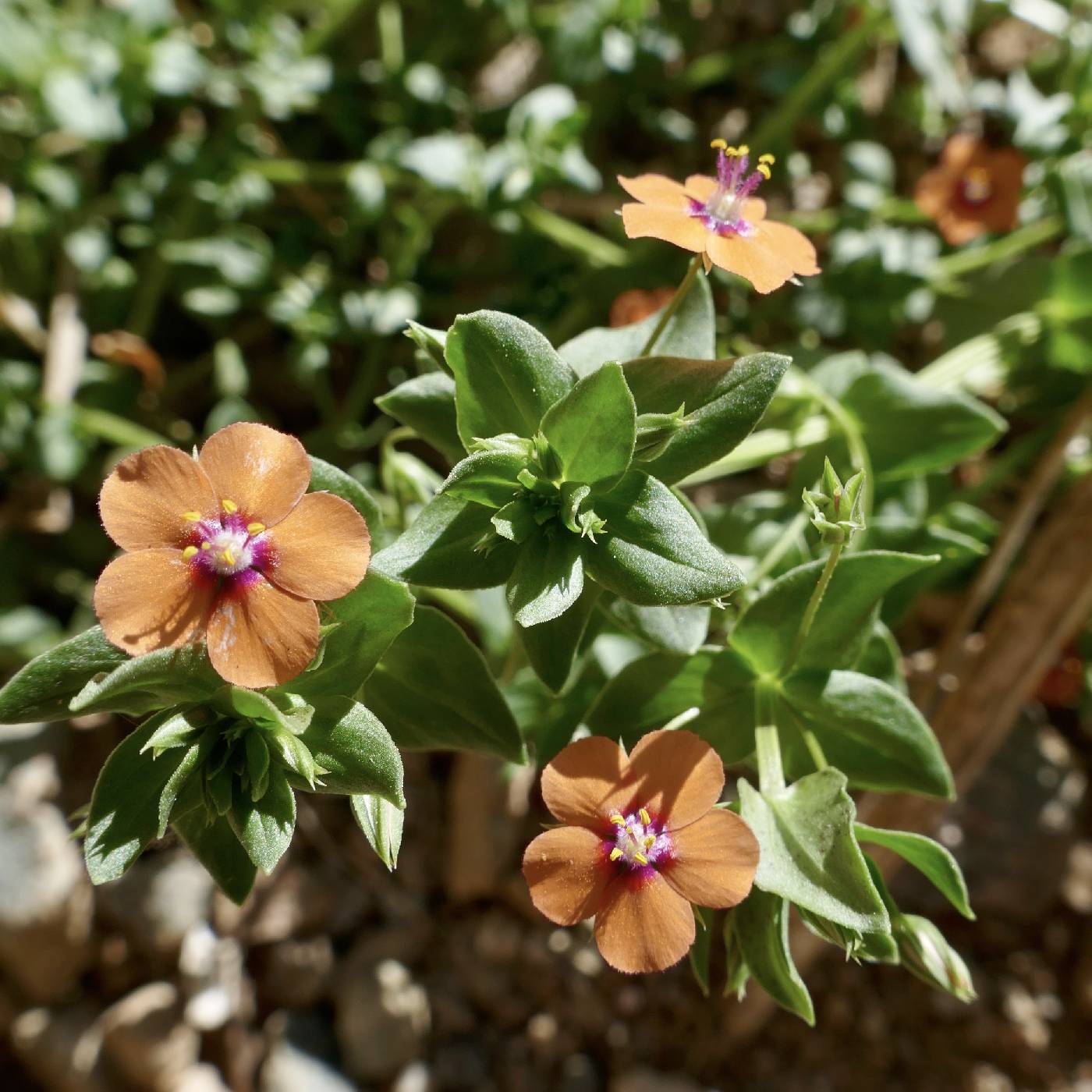Lysimachia
|
Family: Primulaceae |
Herbs [shrubs], perennial, usually not succulent, glabrous or stipitate-glandular; resin canals sometimes obvious. Rhizomes usually present; roots fibrous. Stems erect to ascending, prostrate, decumbent, or trailing, simple or branched. Leaves cauline, opposite, whorled, or alternate, monomorphic (L. lanceolata dimorphic); petiole present or absent; blade linear to elliptic, orbiculate, ovate, lanceolate, oblanceolate, or deltate, base truncate to obtuse, rounded, or cuneate, frequently decurrent on petiole, sometimes also on stem, margins usually entire, rarely sinuate or serrulate, usually plane to revolute, glabrous, irregularly pubescent, ciliolate, or stipitate-glandular, apex obtuse to rounded, acute, or acuminate, surfaces usually glabrous or pubescent, or stipitate-glandular. Inflorescences terminal and/or axillary, racemes, panicles, [umbels], verticils, or solitary flowers; bracts present, sometimes becoming indistinguishable from leaves. Pedicels present (absent in L. maritima). Flowers: sepals 5(-9), green or whitish to pinkish, calyx deeply lobed, lobes usually lanceolate, ovate, or deltate, longer than tube; petals absent or 5(-9), corolla yellow (sometimes with reddish base) or white and sometimes darkly streaked (by resin canals) variously black, brown, maroon, red, or brownish violet, usually rotate (to funnelform or campanulate), deeply lobed, lobes longer than tube, apex variously obtuse to rounded or acute to acuminate, mucronate, or apiculate; stamens 5; filaments connate proximally or distinct; staminodes present or absent. Fruits capsular, globose, 1.3-7 mm, dehiscence valvate. Seeds 1-20+ (unknown in L. nummularia), shiny black, brown, or reddish brown, ovoid to obconic or trigonous or ± hemispheric, sometimes sharply margined or minutely winged, smooth to roughened, sometimes with deciduous, netlike, grayish covering. x = 8-15. H. Handel-Mazzetti (1928), and later J. D. Ray (1956), divided Lysimachia into five subgenera, primarily distinguished on such characters as flower color, number of floral parts, presence/absence of staminodes, inflorescence type, etc. They also indicated that vegetative characters exhibit much variability and transitional traits (particularly in subg. Seleucia: L. ciliata, L. hybrida, L. lanceolata, L. quadriflora, L. radicans, L. tonsa). Ray recognized L. hybrida to be a subspecies of L. lanceolata and treated L. graminea as a narrow-leaved form within L. lanceolata. V. J. Coffey and S. B. Jones (1980) and most recent floras resegregate those species. Additionally, hybrids are also known to occur between some of the species (especially L. quadrifolia, L. terrestris, and L. thyrsiflora), have become well established in some areas, and contribute to taxonomic confusion. As a result, regionally, species may appear quite distinct, but in the flora as a whole, there is a blurring of some species boundaries. Basal leaves often exhibit different states than medial and distal cauline leaves (e.g., larger blades, longer petioles, etc.). Descriptions of leaves here are based on medial and distal leaves only. Some species are described as having ciliate margins on the petiole or blade base. Petiole 'cilia' frequently are actually thickened flaps of tissue, sometimes with widened bases. Flowers are pedicellate, and subtended by bracts or leaves or various transitional forms, which lead to inflorescence transitions, from solitary flowers in axils of leaves to leafy 'panicles' to dense racemes. Occasionally, solitary flowers axillary to whorled leaves appear clustered, and have been referred to (as here) as verticils. Most species have a relatively short or long staminal tube. Some (subg. Seleucia) have a series of staminodes alternating, and forming a single whorl, with the fertile stamens. These staminodes are rather short and more or less lanceolate; in Lysimachia thyrsiflora, small teeth are sometimes produced on the staminal tube, perhaps vestiges of staminodes. For a more comprehensive discussion of the morphology, see J. D. Ray (1956). Clearly, more work is needed to understand the species relationships, especially in light of recent research that indicates close affinities among the species of Lysimachia and Trientalis and some Anagallis (see A. A. Anderberg et al. 2007 for further discussion). Some species are choice ornamentals (e.g., Lysimachia ciliata, L. clethroides, L. nummularia, and L. punctata); L. clethroides and L. nummularia can become overly aggressive and even invasive.
PLANT: Perennials with upright stems in AZ. LEAVES: cauline, opposite, glabrous; margins generally entire. INFLORESCENCE: in AZ a single peduncled flower in the axils of leaves. FLOWERS: generally saucer-like in appearance, yellow, sometimes dotted or streaked with purple; calyx deeply lobed, the lobes 5; corolla deeply lobed, the lobes 5, the apices in ours apiculate; stamens 5; 5 staminodia (anther-less appendages generally attached to the corolla and alternate with the stamens) present; ovary superior. FRUITS: valvate. NOTES: 100 spp., generally of north temperate regions. (Greek: loosing or released from strife). Coffey, V. J. and S. B. Jones, Jr. 1980. Brittonia 32:309-322; Ray, J. D., Jr. 1956. Illinois Biol. Monogr. 24:1-160. REFERENCES: Cholewa Anita F. 1992. Primulaceae. Ariz.-Nev. Acad. Sci. 26(1)2. Fls 5(6)-merous in our spp.; cal spreading, parted nearly or quite to the base; cor-tube very short, the limb broadly campanulate to rotate; stamens 5(6), distinct or monadelphous, sometimes alternating with small staminodes; perennial herbs with opposite or whorled, or rarely alternate lvs and yellow or rarely white fls, often marked with dots or lines, in axillary or terminal racemes or panicles or solitary in the axils. (Steironema, Naumburgia) 150, cosmop. Our first 6 species are self-incompatible and produce frequent hybrids. Gleason, Henry A. & Cronquist, Arthur J. 1991. Manual of vascular plants of northeastern United States and adjacent Canada. lxxv + 910 pp. ©The New York Botanical Garden. All rights reserved. Used by permission. |

